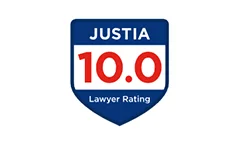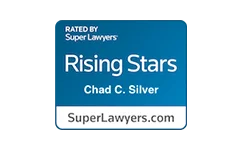IRS Form 1040X: How To File An Amended Tax Return

You might be surprised to learn that up to 80% of those filing taxes in 2018 made some kind of mistake on their taxes. For this particular year that isn’t that surprising because of the sweeping changes made by Congress in 2017.
Yet, it’s still surprising the number of people who have errors on their taxes that are found after completing their filing. Sometimes the error ends up in your favor which can mean a bigger tax refund. Other times, it means you owe the IRS more.
Experienced tax attorneys can help you with when you should complete IRS Form 1040X.
Whether it means a bigger return or it means you owe, if you recognize an error made while filing taxes, you need to use Form 1040-X to inform the IRS of the error.
Read on to learn all you need to know about IRS Form 1040-X.
What Is IRS Form 1040X?
This might surprise you, but even the IRS understands that tax filers make mistakes on occasion. It’s for this reason the IRS has Form 1040-X.
If you recognized you have made an error in your tax filing or you’ve left something off that changes the status of your return, you would use Form 1040-X to inform the IRS of the error and fix it.
You should use this form for mistakes in the filing where it changes the outcome of your tax filing. This would include information that was left off by mistake or incorrect information was filed.
You should not use this form for simple mathematical errors. The IRS can fix those automatically.
How Does Filing a Form 1040-X Work?
There are some important things to know about filing Form 1040-X.
Again, don’t choose to file this form if you’ve made a simple math error. Typically, the IRS will fix that kind of mistake on their own and send you a letter with the updated information for your records.
Form 1040-X allows you to file this form and show the IRS your changes to your tax return and the correct tax amount.
You should not file the 1040X yet if they haven’t processed your current form already. If you file it before the form with the error is processed with the IRS, they could get confused about which one has the errors and which one is correct.
If you’ve made an error on more than one year’s worth of returns, each year needs its own 1040-X paperwork. The IRS will expect you to include any forms or schedules with Form 1040-X that impact the changes.
When to File the Form 1040-X
Of course, you want to file when you recognize the mistake. But again, wait until the IRS has processed the form that holds the mistake.
If the error is not in your favor, you don’t want to make the mistake of waiting to see if the IRS catches it. Remember, they can always go back to audit and you want to avoid the risk of an IRS audit at all costs.
The IRS will allow you to make an amendment to your return if you originally filed using one of the following forms:
- 1040
- 1040-SR
- 1040A
- 1040EZ
- 1040EZ-T
- 1040NR
- 1040NR-EZ
There are some time limitations of when you can file the amended return. We’ll get into that more later.
Who Can File an Amended Tax Return?
The IRS doesn’t have restrictions on who can actually file the amended tax return. If you find the error yourself and it seems minor, you can file the form yourself.
Some tax software programs even have modules that will allow you to go in and file the amended form.
Having said that, if you find an error, you want to make sure you really have located all potential issues before you actually file Form 1040-X.
If you didn’t previously use tax services, a tax accountant, or a tax attorney to complete the filing, it makes sense to consult with one now. They can reevaluate your taxes to ensure there are no additional errors before you file the amendment.
Reasons to File Form 1040-X
While the IRS is in the business of getting their tax dollars, they aren’t going to withhold the chance for you to fix a mistake and potentially increase your refund amount.
Taking advantage of additional tax credits or deductions that either you somehow missed or just learned about can mean an increase in your tax refund. You want to not miss out on getting your money refunded.
If for some reason, the mistake is in the IRS’s favor, then filing the amended return could help avoid an audit or the risk of penalties and interest fees.
Let’s take a closer look at some of the specific reasons you might need to file Form 1040-X.
New Information
Many people have income from multiple sources. Not many filers have a single W-2 form as part of their filing.
For example, you might have multiple 1099 forms because you work on contract jobs, freelance, or receive non-taxed income. You might have filed your taxes, then received another 1099 form.
It’s important to remember, the IRS gets a copy of all of those forms. You don’t want to ignore that you received another one after filing.
You might have received a distribution from a health savings account and failed to report that distribution using Form 8889.
The IRS has also caught onto the cryptocurrency bandwagon. If you failed to report income or losses from your crypto investing, you want to file an amended form.
Tax Law Changes
It will not be a surprise for even a tax novice to learn that tax laws change all the time. Often laws are changed and go into effect retroactively.
There have been many changes to tax laws and tax requirements during the coronavirus pandemic, for example. The American Rescue Plan was signed in March of 2021. It excluded from taxes a large amount of unemployment benefits.
If you had already received unemployment benefits in 2020 and claimed them on taxes, you are eligible for a big tax deduction and should file IRS Form 1040X.
Any tax law changes that impact your tax return, you want to file an amended return.
Missed Important Tax Breaks
As tax season rolls around, it’s not uncommon to hear about ways to save on taxes. You might read or hear about potential tax breaks for the 2021 taxes, only to realize you could have used those tax breaks in the past too.
Here’s an example to consider. If you have paid to take classes through continuing education, you could be eligible for the lifetime learning credit even if you’re not currently enrolled in classes.
Another example involves retirees who missed out on taking the retirement saver’s tax credit. Taking this tax credit can significantly reduce your tax liability.
Time Limitations for Filing a Form 1040-X
While the IRS is willing to let you fix a mistake or make an adjustment, they do have time limits on how far back you can go to do this.
In most cases, there’s a 3-year limit to file an amended return. The IRS will give you 3 years from when you filed the original return. If you filed an extension, then filed the return late, it’s 3 years from when you actually filed the return.
If you paid taxes already, the limit is 2 years from when you paid those tax dollars.
The IRS does make some exceptions for people who either have a disability or who are otherwise incapacitated. You would need to contact the IRS for special circumstances.
Steps to File IRS Form 1040X
Before you sit down and fill out this document, you should have a few forms on hand. The exact forms you will need to amend your document will depend on your situation, as no two tax amendment situations are exactly alike. You might now realize you need or want to file an amended return and are worried about whether that’s a difficult process.
It’s actually a pretty straightforward process assuming you’re sure you need an amended filing and you can locate the tax forms you want to amend.
Let’s take a closer look at the steps to file Form 1040-X.
Step 1: Collect All Relative Documents
The actual IRS Form 1040X is a pretty straightforward form and not that complicated to complete. It is printed with 3 columns on it. You will need to use the documents and information you’ve previously gathered to complete each column.
Before you even begin filling out the form, you want to gather all of the documents you’ll need to file the amended tax documents.
Documents to gather for your 1040X forms:
- W-2s
- 1099s
- Worksheets
- Schedules
- Your original 1040
You will also need the original tax document you wish to amend. Any new documents, including IRS forms or schedules, should also be gathered.
You might have an amended W-2 form or additional 1099 forms you need to file. If there’s a new deduction or tax credit you want to claim, you will need to have the correct documentation to prove this write-off exists.
Before making your amended changes on your new form, make your calculation adjustments in the margins of your original income tax form. After you do that, you can then transfer that number onto your amended document.
Prepare the Most Up-To-Date Forms
It’s good to remember related to deductions and tax credits, the IRS has many forms they will expect you to file to show those. It should be obvious at this point but the IRS will not accept an amended tax filing unless you complete IRS Form 1040X.
You want to make sure you’ve got the correct forms for documentation purposes. This is especially important because you’re filing an amended return.
If you file with itemized deductions and you plan to change your itemized deductions, for example, you will need a copy of the Schedule A form. It’s important that you get the form that matches the year you’re amending. The IRS has all the previous years’ forms available to print out from their website.
Step 2: Fill in the First Section
The first section of the amended form should ask you for your basic information, including your name, contact information, and social security number. If you are married, you will need to include your partner’s name and social security information as well.
If your intention for completing the 1040X form is to change your filing status, make sure you indicate so in the first section. Even if you aren’t changing your filing status, you must select your current filing status.
Step 3: Take a Look at Lines 1-30
Although there are 30 lines on the amendment document, you won’t need to fill them all out. Instead, depending on what you need to amend, you will only need to fill out a section of these lines. For example, if you need to amend your tax before credits, you will fill out lines five through twenty-three.
If you aren’t sure which lines you need, you can always consult the “Which lines to complete” section. If you need more assistance than that, you can reach out to a reputable tax attorney to fill out the document on your behalf.
Step 4: Fill in the Document
You will need to complete lines one through twenty-three based on your circumstances. The amounts on these lines will be pretty similar to what you put on your original 1040 return. When completing the form, you will need to put the original amount in column A and the net changes in column B. Finally, you must put the correct amount between the two in column C. If you must record any decreases, make sure you put them in parentheses.
Column A is where you’ll record the information from your previous tax filing. So, you will look at the tax forms from the year you want to amend and take the numbers and fill them in on column A.
Column B shows the amounts you wish to amend on your form. Let’s say, for example, you have an additional 1099 form for $350 of additional income. You’d list this in the correct box in column B to show the additional income not previously reported.
Column C shows the amended numbers. Basically, you add the numbers from column A to the numbers in column B and fill them into column C.
There is a part of IRS Form 1040X where you will need to provide a detailed explanation of why you’re filing and requesting an amendment to your return.
When you complete line items one through twenty-three, you will be putting in information about your tax liability, deductions, and income to determine if you owe or overpaid. Don’t skip any lines to ensure that you fill out the document accurately. Go through the lines in numerical order because some lines require you to calculate a number based on previously filled outlines.
Step 5: Review and Complete Lines 24 to 30
If you need to change information related to dependents or exemptions, you will need to complete lines 24 to 30. Just like the other section of the document, there are also three columns for this part.
In these lines, you must put what you previously reported in column A, the change in column B, and the correct number in the last column, C. Make sure that you follow along each line, reporting for your spouse and any dependents you have.
With line 28, you will put down your total of exemptions and multiply that number by the number listed in 29.
Step 6: Fill In Part Two
Part two of the amended document doesn’t necessarily ask you about your personal finances or net income; it will ask if you would like to donate $3 to the presidential election campaign fund. If you do, you can check the first box. Keep in mind that if you already checked this box on your original form, you cannot change it.
Step 7: Complete Part Three
The last part of the form, Part three, asks you to explain why you needed to make the changes. This is arguably one of the most essential parts of the entire amendment document because it is your chance to explain to the IRS about your situation.
Once you have your reason written out, you must sign and date it. If you filed jointly with your spouse, they also need to sign the document before sending it back to the IRS.
Lastly, if you employ the help of a CPA or a tax attorney, they must fill in their information at the bottom. It is imperative that you have them sign the document if they prepared the paper on your behalf.
In the event of an audit, the IRS will look to them for answers. If they don’t sign, the IRS will come after you with questions.
Step 8: File the Form With the IRS
Once you complete your document and review it for any errors, you can send it off to the IRS! To help move the process along, be sure to include any relevant forms and supporting documents that will justify your reason for the amendment.
Unless explicitly stated by the Internal Revenue System, you won’t need to include a copy of your 1040. You only needed it to complete the Form 1040X
Once you have the form complete, you can submit it directly to the IRS.
The IRS has an address to mail the form printed on IRS Form 1040X. It’s important to remember to attach any new forms, schedules, or documentation to Form 1040-X.
Paying Additional Taxes
If, after completing the form, you find that you owe additional taxes, make sure you reach out to the IRS as soon as possible to avoid any penalties. The IRS has several different payment methods available for you to use.
Possible ways to pay back the IRS:
- Check
- Money order
- Credit cards
- IRS direct pay
- Payment plans
If you aren’t able to pay your tax liability all at once, you can submit a request for a payment plan. Granted your tax debt is below $50,000; you can request a payment plan online. If your tax liability is higher than that, you will need to submit Form 9465.
I Can’t Pay My Tax Liability
If you need help paying your taxes, you must reach out to the IRS as soon as you can. If you leave it alone and you don’t pay what you owe, the IRS can garnish your wages, or they can put liens on your assets. They will take what you owe them if you don’t work it out with them.
If you cannot pay your debt because of financial hardship, you can let the IRS know. They will ask you a few questions to see if you qualify for the hardship status.
Typically, you meet this criterion if you can’t afford to pay your basic needs in addition to paying your tax liability. Once granted the hardship status, they can reduce your liability or waive your fees.
Offer in Compromise
An Offer in compromise is another way to work out your debt with the IRS. You will want to work with a tax attorney with an offer in compromise. This is because an offer in compromise is how it sounds, a compromise. If the Internal Revenue System agrees you may be able to pay less than what you actually owe.
Monitor Your Amended Return
The IRS typically will audit 3 years back. It’s probably not wise to hope the IRS won’t notice your error. If you find a mistake in your taxes, you should complete IRS Form 1040X.
Once you file Form 1040-X the IRS offers an online tracking tool to monitor the amended return. Don’t be alarmed by the time it takes for the amended return to show up in the IRS system.
I Need Help Filing With the IRS
Dealing with amended reports is a daunting task, especially if you have no idea what you’re looking for or what information you need to add. You can reach out to a certified public accountant to help you file the document, but they may not be the best option for your solution.
When it comes to dealing with the IRS for matters as such, you will want someone who can negotiate on your behalf and who can best explain your reason for amending the document. Tax attorneys are the best option to help you with this type of situation because they are a bit more knowledgeable about tax law, especially when it comes to the IRS.
File Your 1040X With Ease
Although there are form 1040x instructions listed on the document to walk you through the process, they aren’t necessarily clear-cut. There may be credits you can claim that you may not know of, which could further reduce your tax liability.
If you do owe the government money, there are ways for you to pay down that debt comfortably. Contact us for guidance if you need help filing your Form 1040X with the IRS.
There’s no reason to find yourself in a bad spot with the IRS over a mistake in your taxes. Likewise, there’s no reason to pay more taxes than necessary. This is the reason the IRS created Form 1040-X.
If you need help with your taxes for this year or amending a previous return our experienced tax attorneys can help. Contact us today to set up a time to evaluate your tax situation.





Free Consultation 24/7
Chad Silver
Attorney

Silver Tax Group Locations


777 South Flagler Drive
Suite 800 – West Tower
West Palm Beach FL 33401

4005 Guadalupe St
Suite C
Austin, TX 78751


